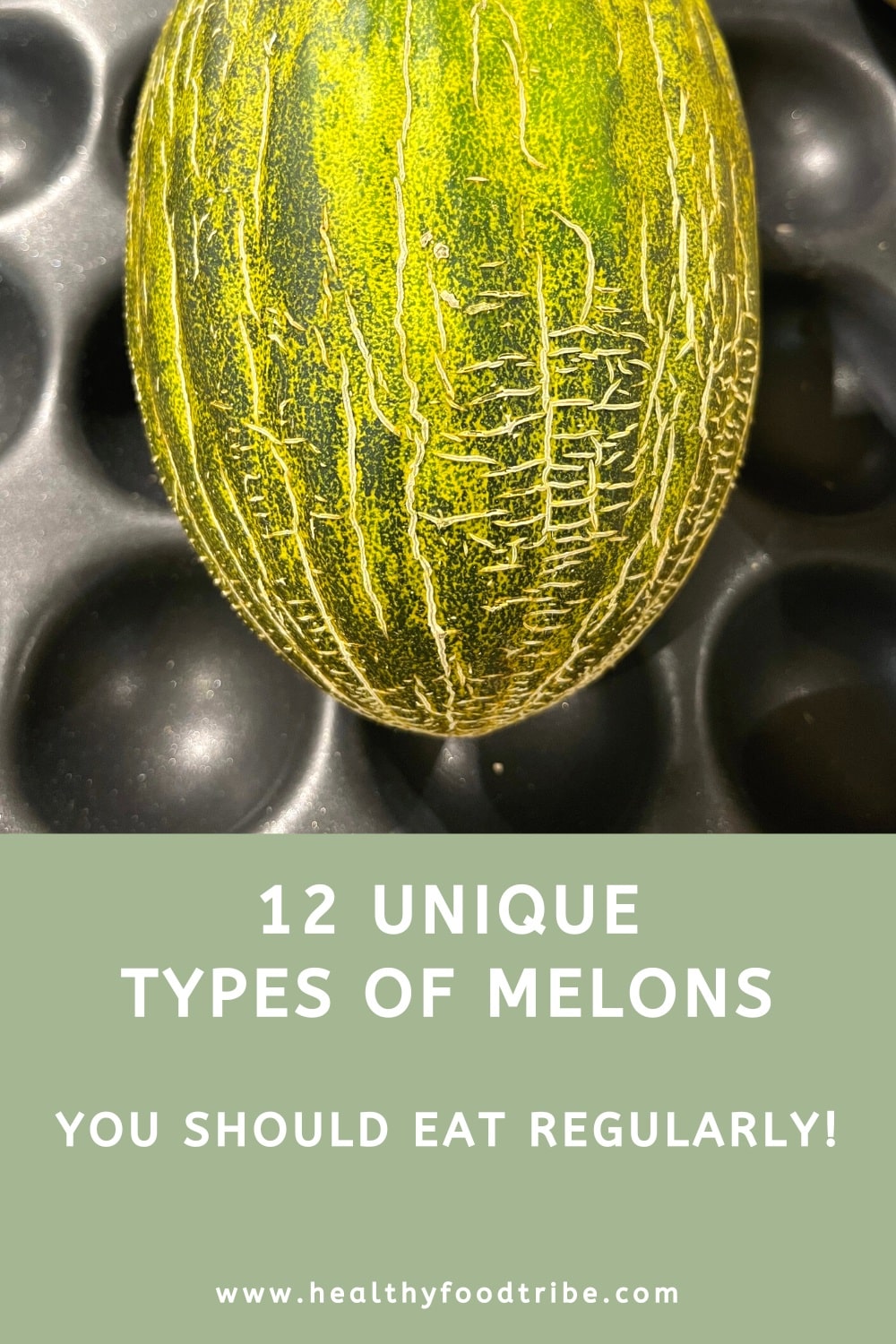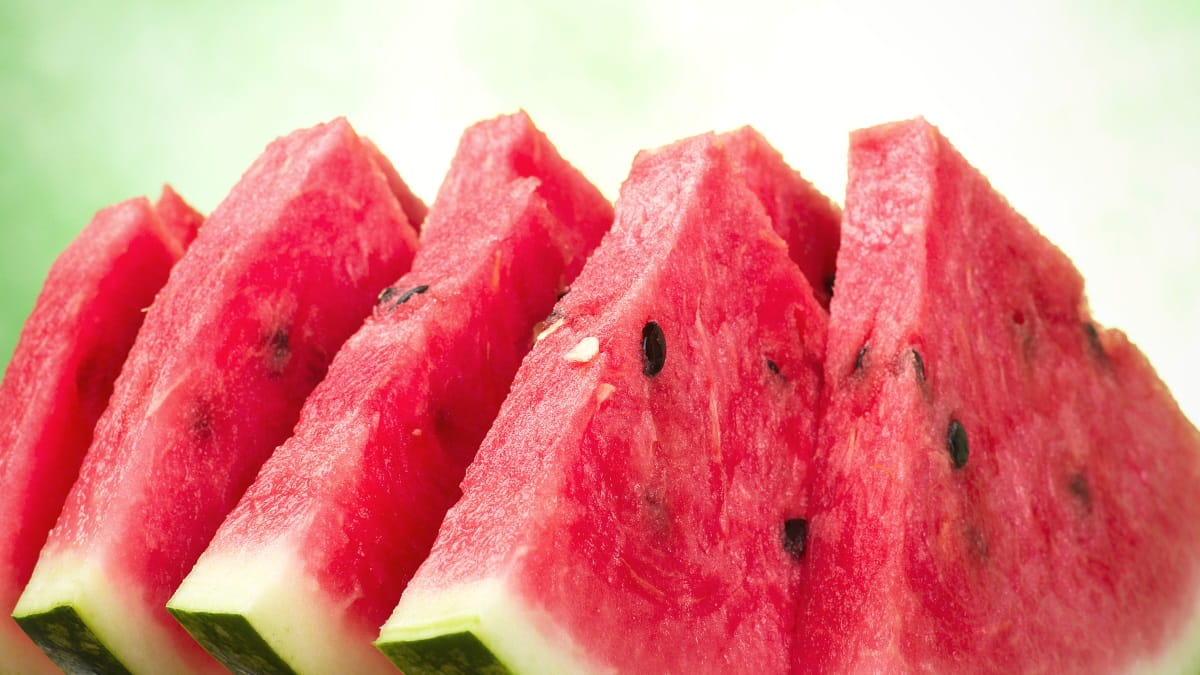Last updated: April 22, 2024
This guide shares twelve of the most popular types of melons you should try, from the sweet and juicy watermelon to the dry and spongy bitter melon.
When it comes to melons, there are a few fruits that really shine in terms of popularity. But watermelons and cantaloupes aren’t the only options in this category. In fact, they may not even be the best-tasting melons out there.
In this article, we’ll look at 12 of the most popular melons from around the world. Some of these you will have heard of, while others you’re going to wish you knew about sooner.
My favorite melon? Nothing beats watermelon on a warm summer’s day!
1. Ambrosia Melon

The ambrosia melon looks a lot like the common cantaloupe on the outside. It is greenish-yellow in color with thick white-gray netting running all over the exterior. Inside, the similarities continue, with ambrosia flesh having an orange hue similar to that of cantaloupe.
Technically speaking, ambrosia is a variety of cantaloupe, but classification gets tricky when dealing with melons. All you really need to know is that this cantaloupe variety is far sweeter and more tender than most melons given this common name. The taste is highly floral and has been described as a combination of all other melon varieties combined.
Given this, you can imagine ambrosia melon makes a mighty fine treat when cut up and served plain. It is also a popular topping for ice cream and is sometimes pureed into sweet melon soup. The exact origins of ambrosia are not known, but it descends from muskmelons, which are native to Western Asia.
2. Ananas Melon
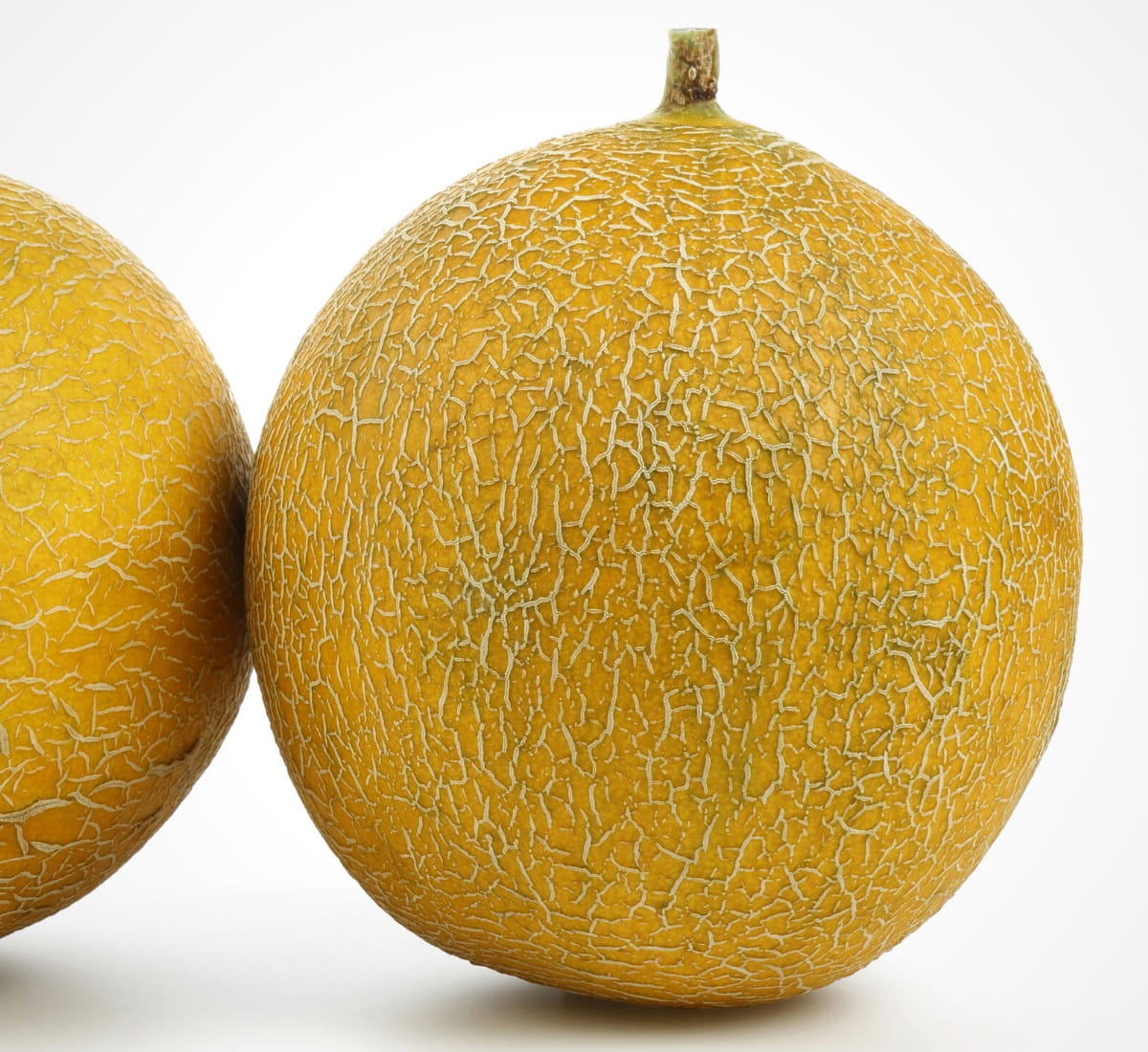
Ananas melons are another muskmelon variety that has a netted rind like a cantaloupe. But these are easily distinguished by their oval shape and yellow skin.
Inside the ananas, you’ll find white to yellow to dull orange flesh, depending on the variety. Their flavor is sweet and floral with tropical notes and a noticeable pineapple scent. In fact, “ananas” means pineapple in various European languages like French, Italian, and Dutch.
These flavorful melons pair well with both sweet and savory dishes. The crisp flesh holds its shape well when cubed or balled and is often used in fruit salads. It is also served alongside salty meats, like prosciutto, and various types of goat cheese.
The history of this fruit is a little muddled, but it likely originated in Northern Africa or the Middle East. It was documented in North America in the early 19th century and was famously grown in Thomas Jefferson’s garden.
3. Bitter Melon
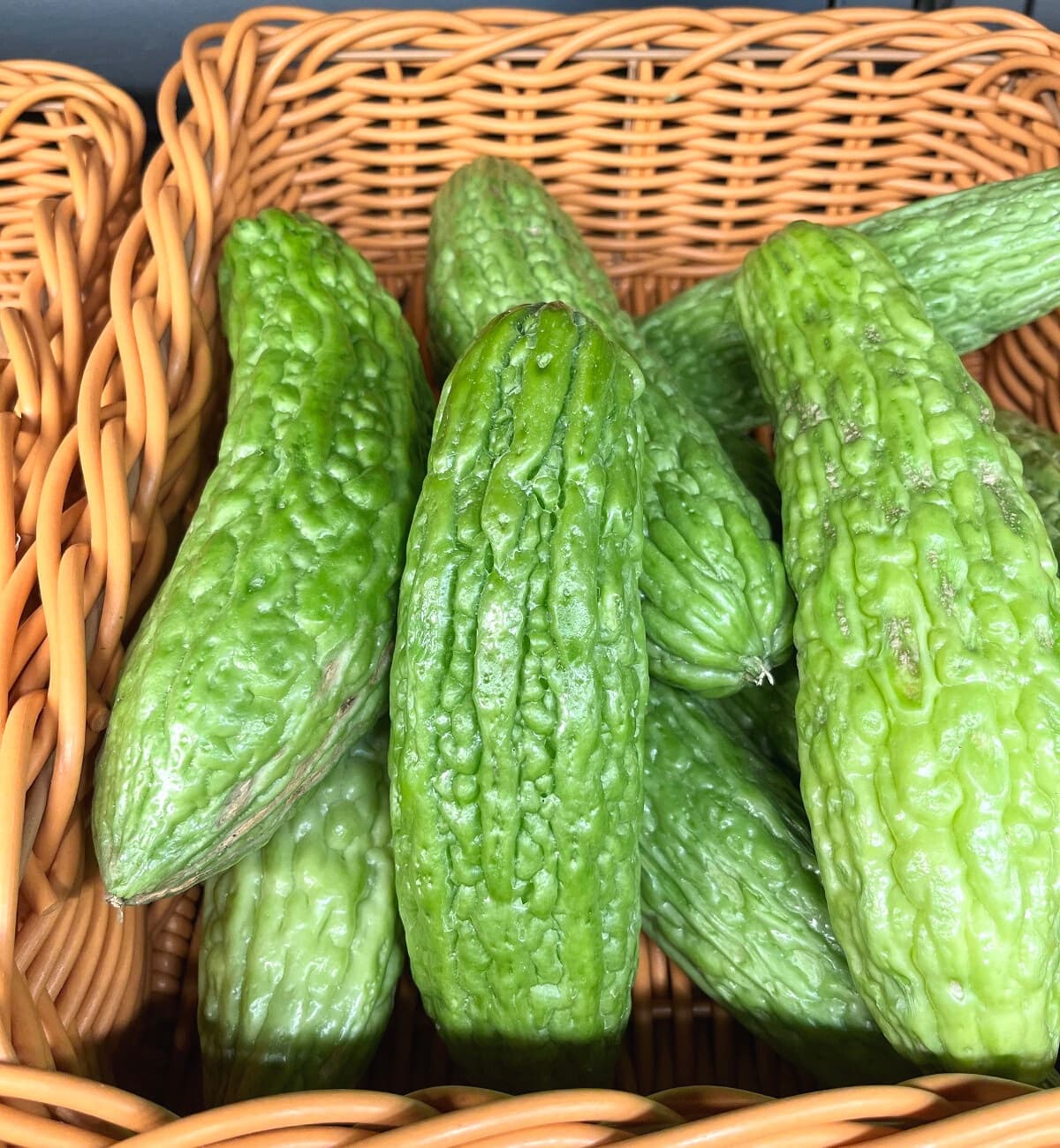
Despite the name, bitter melons are more closely related to cucumbers than most other melons. These dark green fruits are long like cucumbers but with pointed ends and lumpy or spiky skin. They grow to about 8 inches long and are filled with numerous thick seeds.
The flesh of bitter melon fruits is not juicy, but dry and spongy. The seeds are typically discarded, and only the flesh and skin are eaten. They can be prepared raw or cooked in much the same way you would cook a vegetable. As you can guess from the name, this melon is rather bitter tasting. And the riper they get, the more bitter they become, but the cooking process does remove some of the bitter flavors. Read my guide on how to eat bitter melon for more details.
Bitter melon is native to Africa but wasn’t fully domesticated until it arrived in Southeast Asia thousands of years ago. Today, this strange melon is used frequently in Chinese, Japanese, Sri Lankan, and Pakistani cuisine.
4. Canary Melon
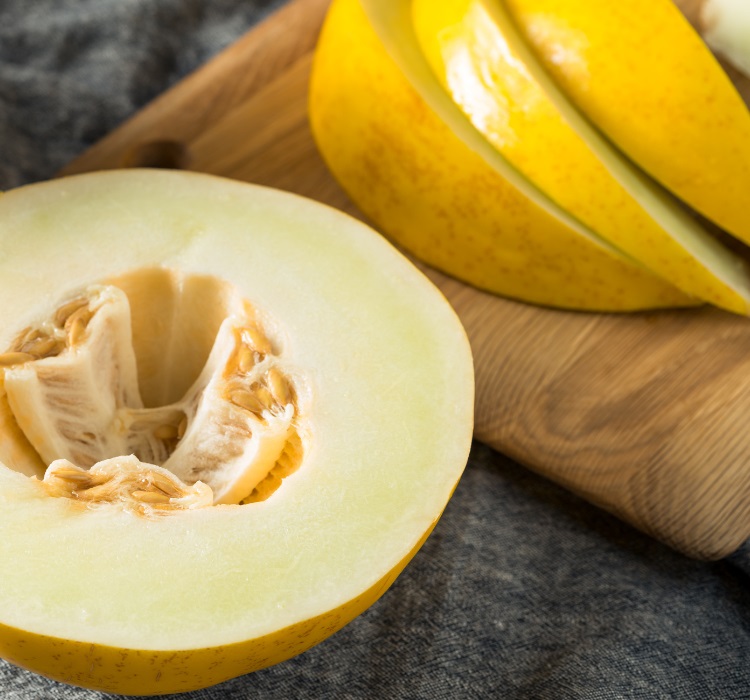
The canary melon is so named because of its bright yellow rind. These medium-sized fruits are somewhat oblong and filled with dense white flesh. When fully ripe, this flesh takes on a consistency similar to that of a pear.
The flavor of a canary melon is somewhat like a honeydew, but sweeter and with a bit of added tanginess. In Asia, it is served raw as a sweet breakfast treat. In the US, it is used as an elevated replacement for honeydew in fruit salads and as a side dish at barbeques.
Originally from Iran, this bright fruit is now commonly grown throughout the Mediterranean, Asia, North Africa, the southern United States, and Mexico. Canary melon is one of my favorite yellow fruits.
5. Cantaloupe

Potentially the second most popular melon in the world, cantaloupes are actually not a distinct variety of melon but a catch-all term for any melon with orange flesh.
Originally, cantaloupe was used to describe non-netted, orange-fleshed varieties like the European cantaloupe. This ridged melon has smooth, dark green skin. But today, the term is more commonly used to describe melons with rough, gray netting on the rind.
The most common cantaloupe variety you’ll find in US grocery stores is the North American cantaloupe. This quintessential cantaloupe is round and netted with dull orange flesh. And is typically around 8 inches from end to end. A ripe cantaloupe is smooth and sweet with plenty of juice. The flavor is complex, with notes of honey backed by muted muskiness and a floral scent.
The term cantaloupe comes from Italy and denotes the region where the fruits were first cultivated. But they likely originated in Armenia. Today, cantaloupes are most often enjoyed as a fresh summer treat. They are commonly sliced into wedges to be eaten plain, or cubed or balled and added to fruit salads.
6. Cucamelon
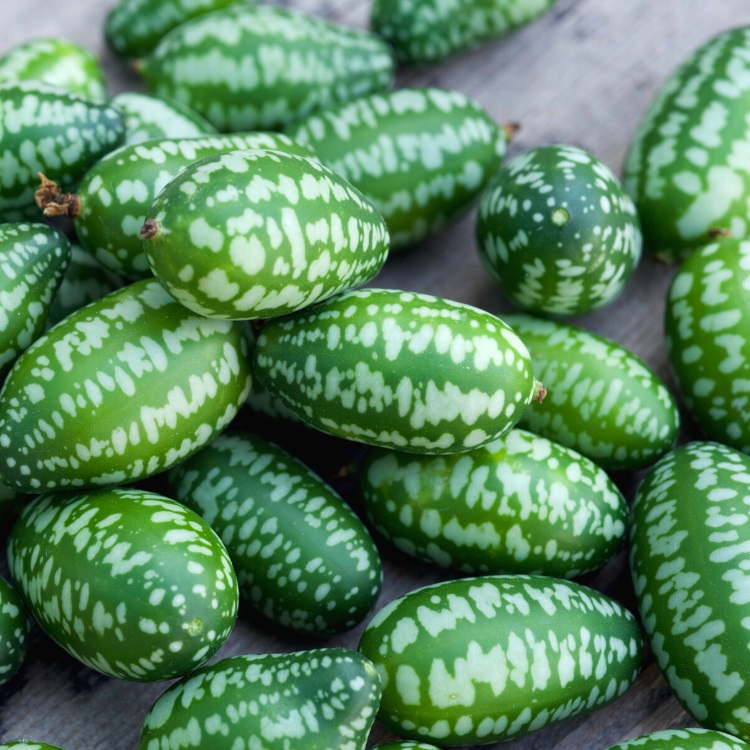
Cucamelons are easily the cutest melon in the world. These tiny fruits, which are also called mouse melons, look like watermelons but are only the size of a grape. While they look the part of a melon, they actually have a flavor more reminiscent of cucumber. They are watery, crisp, and fresh with some added tartness.
All parts of the cucamelon, including the thin skin, watery flesh, and small seeds, are consumed. Most often, they are eaten straight off the vine as a fresh, tangy snack. They can also be pickled like cucumbers or used as a garnish on savory dishes and in cocktails.
These mini melons are native to Central America, growing well from Mexico south to Venezuela. They were likely consumed by humans long before European settlers arrived and continue to be a popular fruit in the region today. Cucamelon is one of my favorite green fruits.
7. Gaya Melon
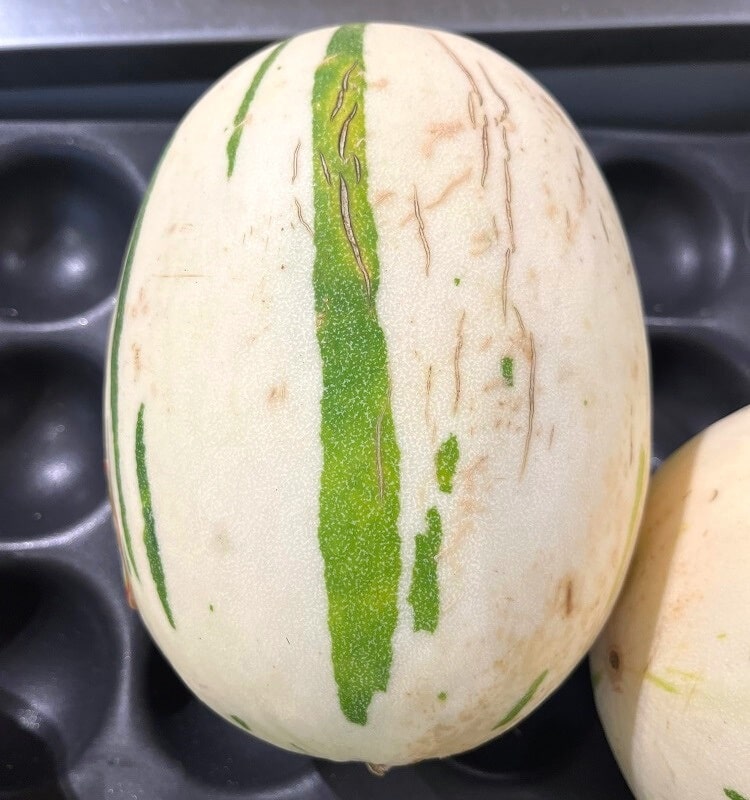
The Gaya melon, also known as the Dino melon, is another fascinating variety. The Gaya melon is notable for its unique appearance, featuring a rough, scaly skin that might remind you of a dinosaur’s skin, which is where its name comes from. This exterior is typically a mix of green and yellow tones.
Inside, the Gaya melon has a crisp and juicy flesh that is very sweet, often compared in texture and taste to other melons like cantaloupe and honeydew.
The Gaya melon is valued for its refreshing flavor and is a popular choice in many parts of the world for fresh eating, in salads, or as a part of dessert dishes.
8. Honeydew
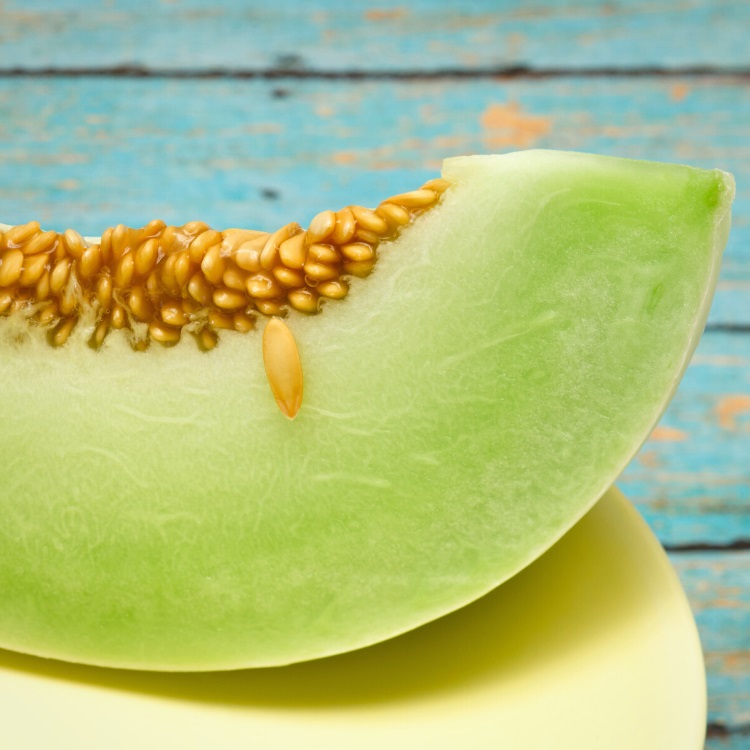
Honeydew melons are another well-known variety throughout the world. These smooth-skinned melons are whitish-green to whitish-yellow on the outside. Inside, the dense flesh matures from white to pale green.
This melon has a unique flavor that is subtly sweet with a musky aftertaste and notes of cucumber and nectar. The term “honeydew” is one specific to North America. In France and Algeria, where these melons originated, the translated name is White Antibes.
Whatever you call it, this melon is popular in many countries, including the US, Europe, and China. It is most often eaten fresh, as a soup, or used as a flavoring agent for treats and cocktails.
9. Santa Claus Melon
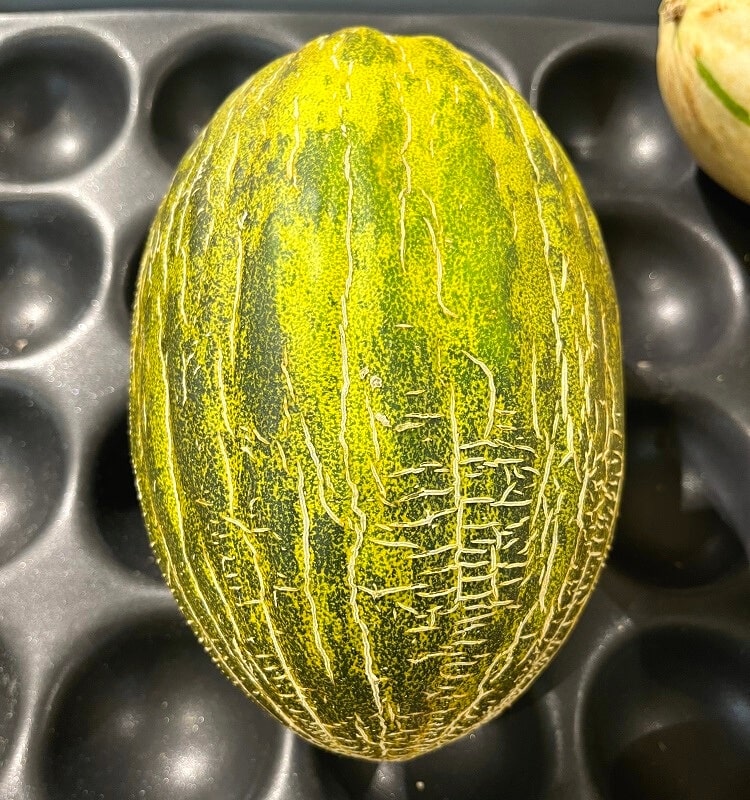
The Santa Claus melon, also known as the Piel de Sapo melon, is quite interesting. Its name translates to “skin of the toad” in Spanish, which refers to its thick, green, and mottled skin that resembles a toad’s. This melon is especially popular in Spain but can be found in other parts of the world as well.
The Santa Claus melon has a very sweet, pale green to white flesh inside. It’s known for its long shelf life, which is why it’s named the “Santa Claus melon”, as it can last until the Christmas season if harvested in late summer.
The flesh has a texture similar to that of a honeydew melon but is slightly firmer. It’s commonly eaten fresh, used in fruit salads, or served with cured meats like prosciutto, which complements its sweetness.
10. Persian Melon
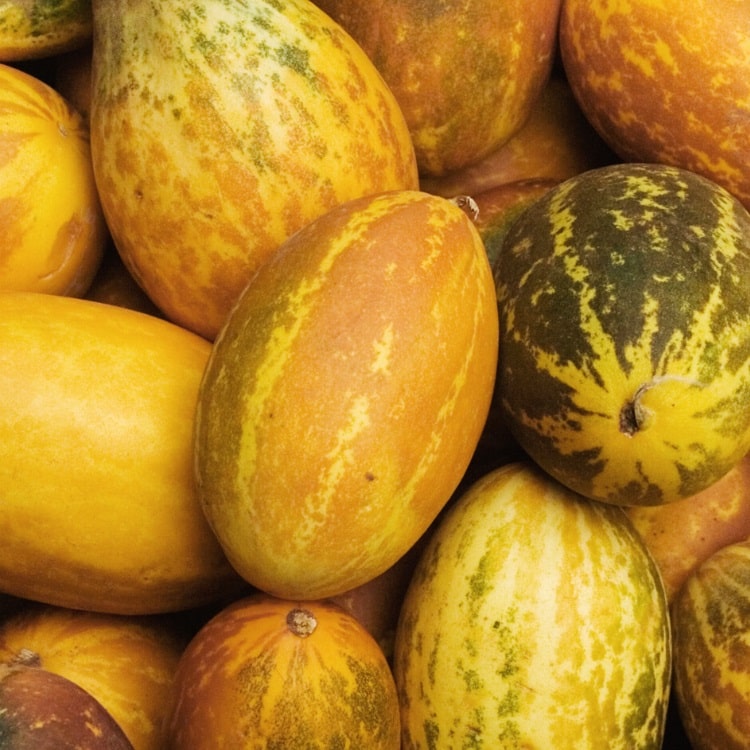
Persian melons have a unique look that makes them easy to distinguish. They are oblong in shape, resembling a spaghetti squash more than your typical melon. And their lightly netted rind starts out dark green and matures to creamy yellow.
The flesh inside is orange and has a very similar flavor to that of the closely related cantaloupe. However, this melon tends to hold more water, so the flavor is less sweet, especially in the larger varieties.
As you can imagine, Persian melons hail from Persia, or what is now Iran. They are a bred cultivar of the Cucumis melo species and are also known as Odessa melons. Like other melons, Persians are most often enjoyed fresh or included in fruit salads.
11. Watermelon

Hands down the most popular type of melon, watermelons have a look and flavor all their own. These unique melons, which come in many shapes and sizes, have smooth, dark green rinds with pale green stripes. Some varieties are small and round, while others are oblong and frequently weigh over 20 pounds.
The heaviest watermelon ever recorded was grown by a man in Tennessee. This beastly melon weighed in at a massive 350 pounds. Inside that big melon was the same bright pinkish-red flesh that is inside all watermelons. This flesh is mealy and incredibly juicy. Many commercial varieties are seedless, while heirloom watermelons contain numerous inedible black seeds.
Watermelons have a uniquely juicy, slightly sweet flavor with a touch of tartness. They are most often enjoyed fresh by the slice. The juices can be used as a flavoring for drinks and frozen treats.
12. Winter Melon
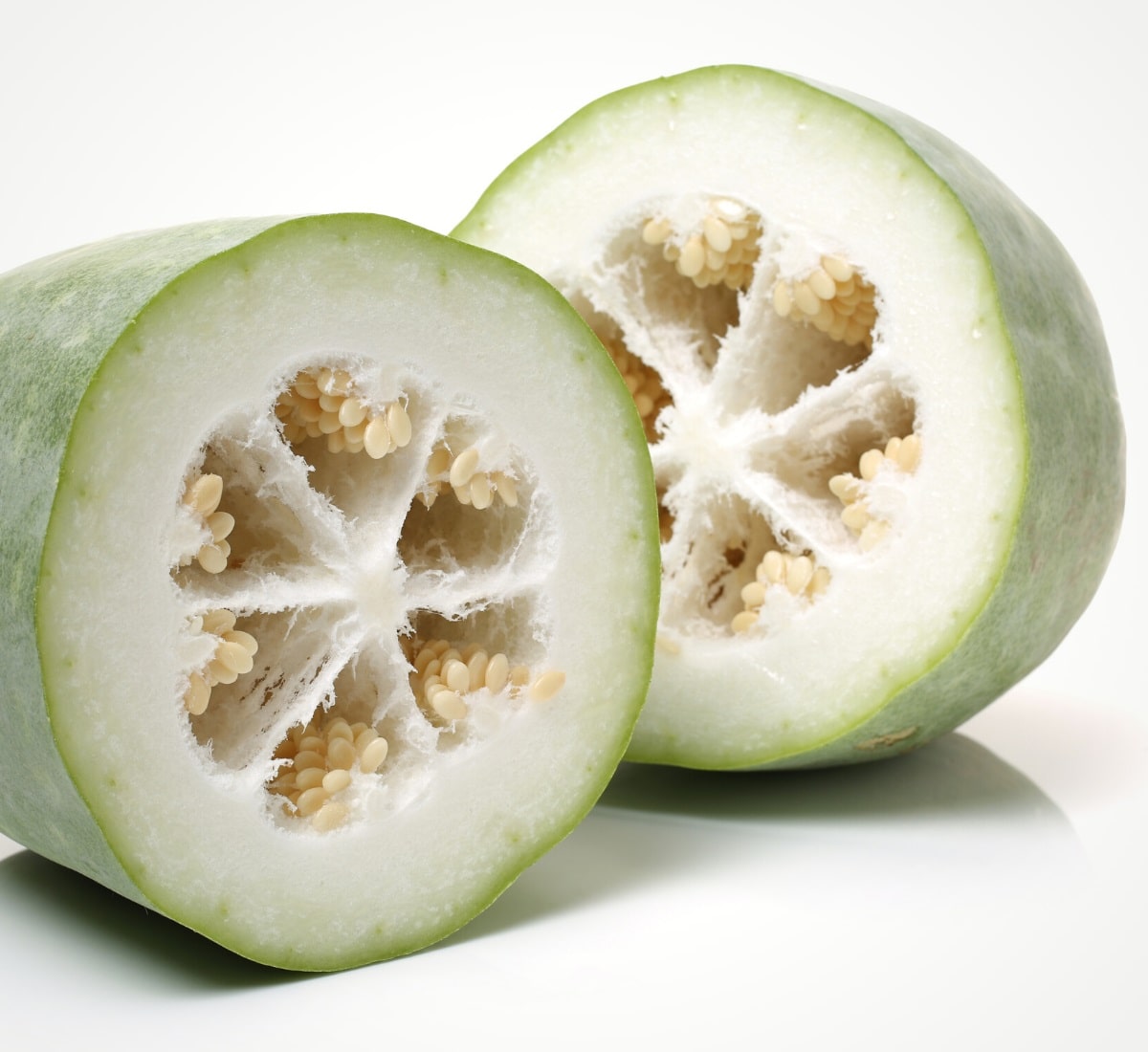
Winter melons look very much like large, fat cucumbers. But cut into one of these pale green melons, and you’ll immediately see the difference.
For one, winter melons have thick waxy skin. It’s this skin that earns the fruit its name. Because of this thick rind, these summer-harvested melons can last well into the winter before they need to be eaten.
Another distinguishing characteristic of winter melon is its dense white flesh. This flesh is somewhat sweet when immature, but ripens into a mild cucumber flavor. Some liken the taste of a ripe winter melon to that of the white flesh of a watermelon.
Because of its neutral flavor, winter melon is most often utilized as a vegetable. Around the world, it is cooked in a variety of different soups and stews. It can also be candied and dried for a special treat. Winter melons, which are also called wax gourds, are native to Southeast Asia and somewhat rare in America, even today.
